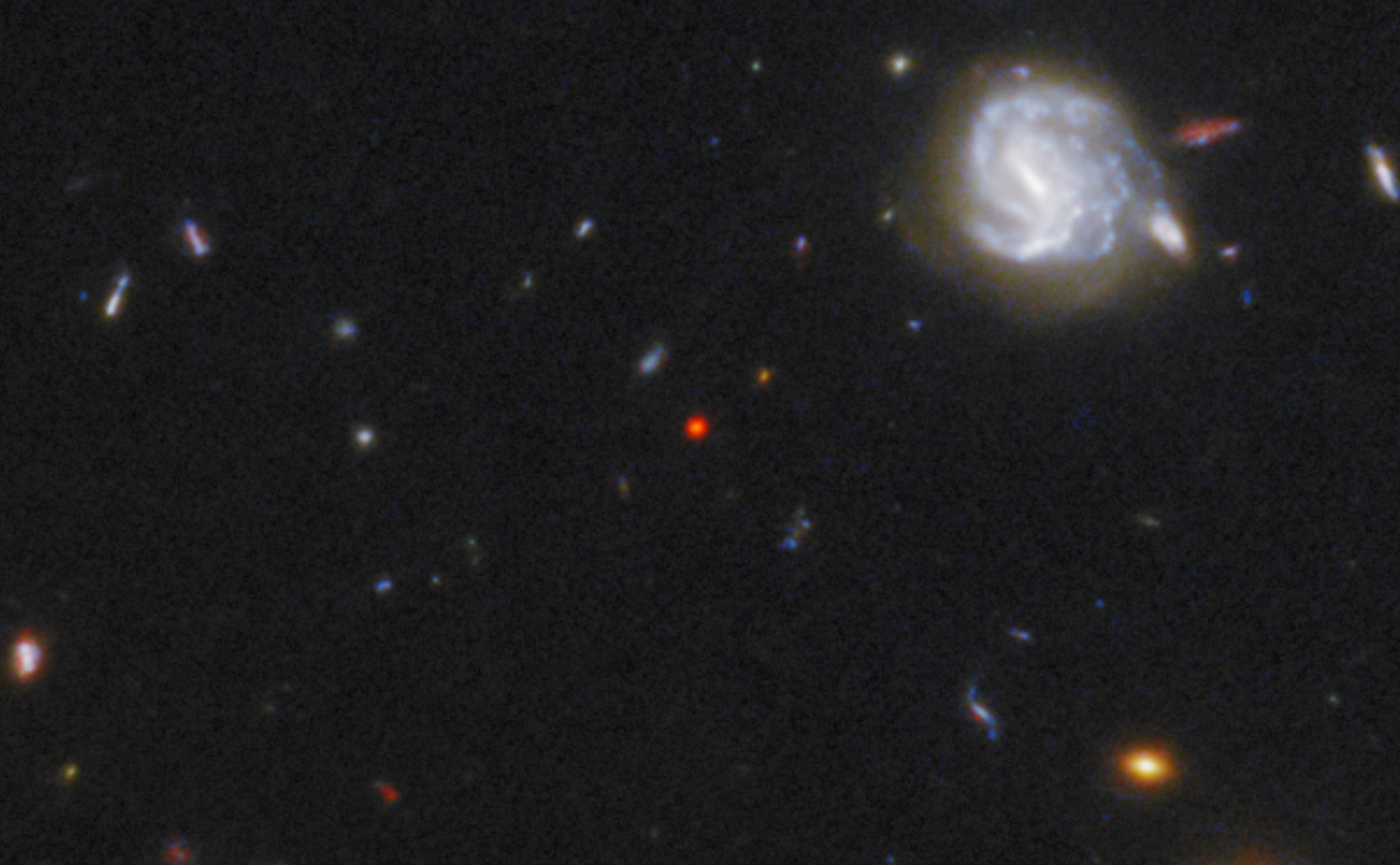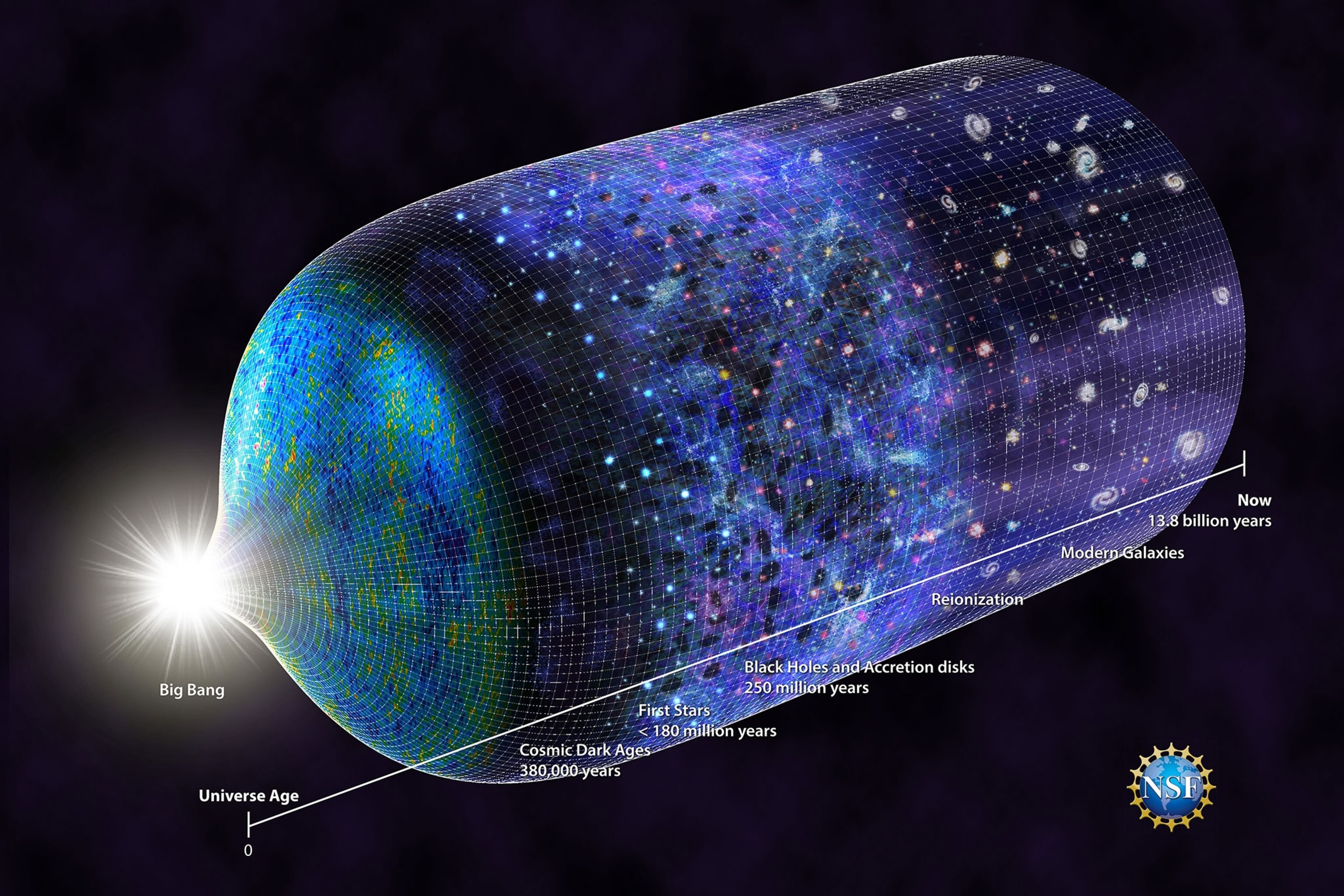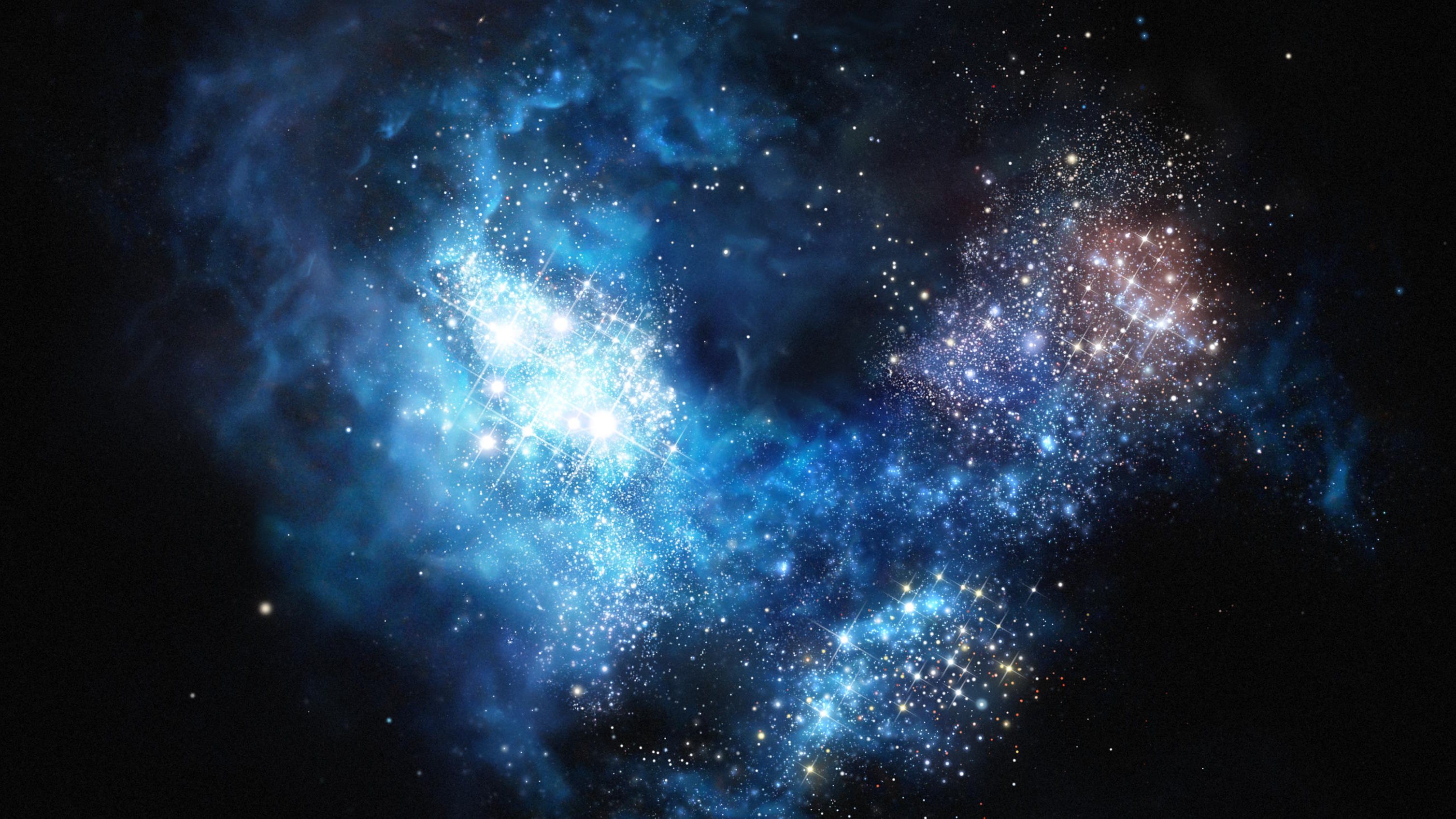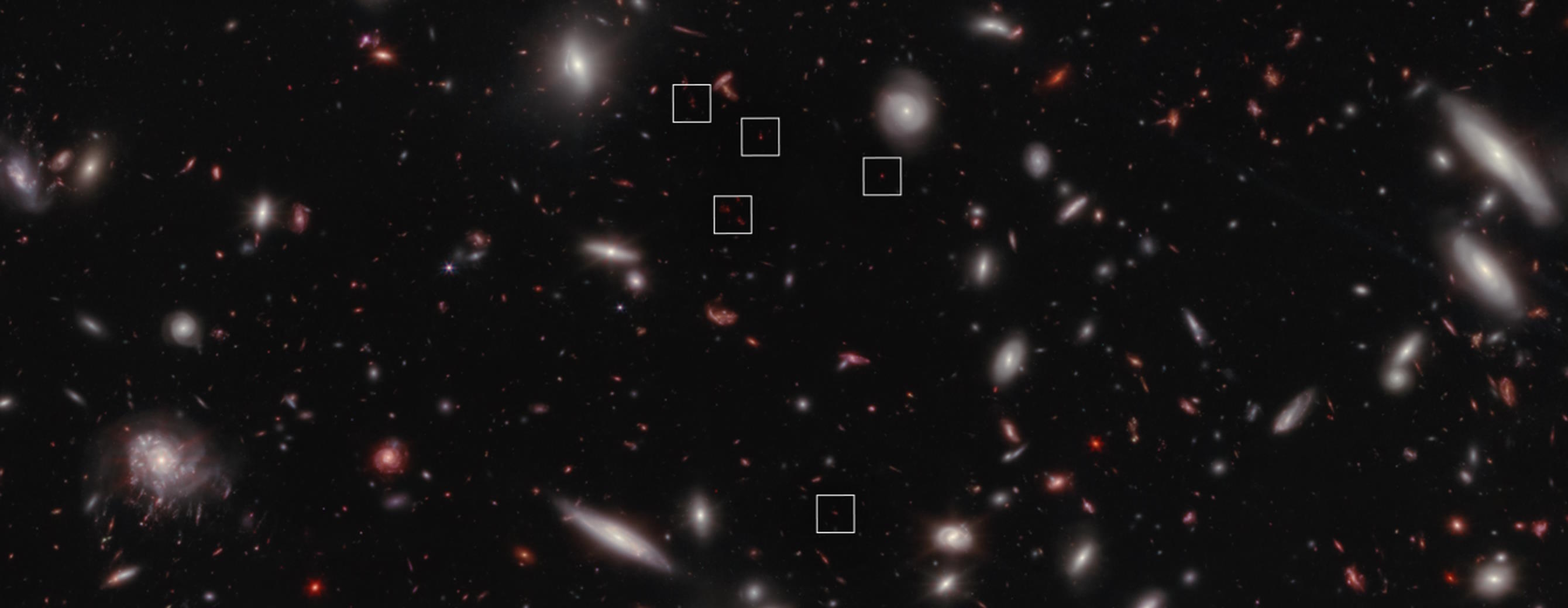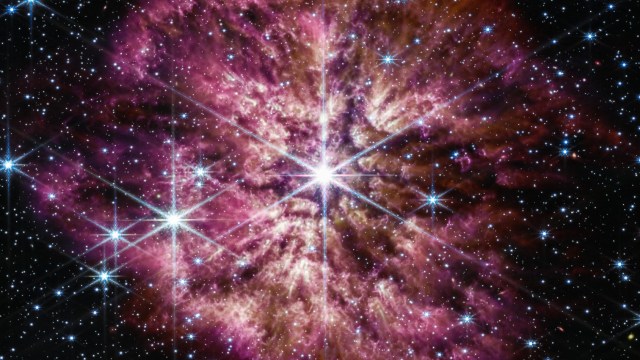The first dark, primordial galaxy has gas, but no stars

- While surveying the sky with the Green Bank Telescope, an accidental, incorrect pointing imaged a previously unremarkable region of the Universe.
- With no known notable stars or galaxies present within that region, no signal was expected, but instead an enormous radio signal was observed.
- More than a billion solar masses of hydrogen gas are clumped together, but no stars are visible within it. Could this be the first dark, primordial galaxy ever seen?
Imagine, if you dare, what the Universe was like before any stars had ever formed within it. All of the normal, atom-based matter within it was pristine, but the regions that had slightly more matter than normal would start attracting everything in their vicinity. Over time, they would build up larger and larger amounts of mass, until a critical threshold was reached that triggered gravitational collapse. Once that occurred, you’d make stars, and be well on your way to building up what would someday turn into a modern-day galaxy. These early “first galaxies,” still beyond the reach of even JWST, must have been quite abundant early on.
But are there any local, nearby analogues? Are there large, galaxy-scale populations of gas, at present, where maybe only a small number of stars exist within that clump at all? Could there even be enormous clouds of matter that have yet to collapse and form stars, bound together in a great, dark, star-free halo?
Previous large surveys failed to reveal any objects like this, finding only low-surface brightness galaxies that are either very tiny and low-mass or otherwise are caused by the gravitational interaction of two nearby galaxies. But an accidental discovery of an object known as J0613+52, potentially the first dark, primordial galaxy, may hold a treasure trove of cosmic riches within it.
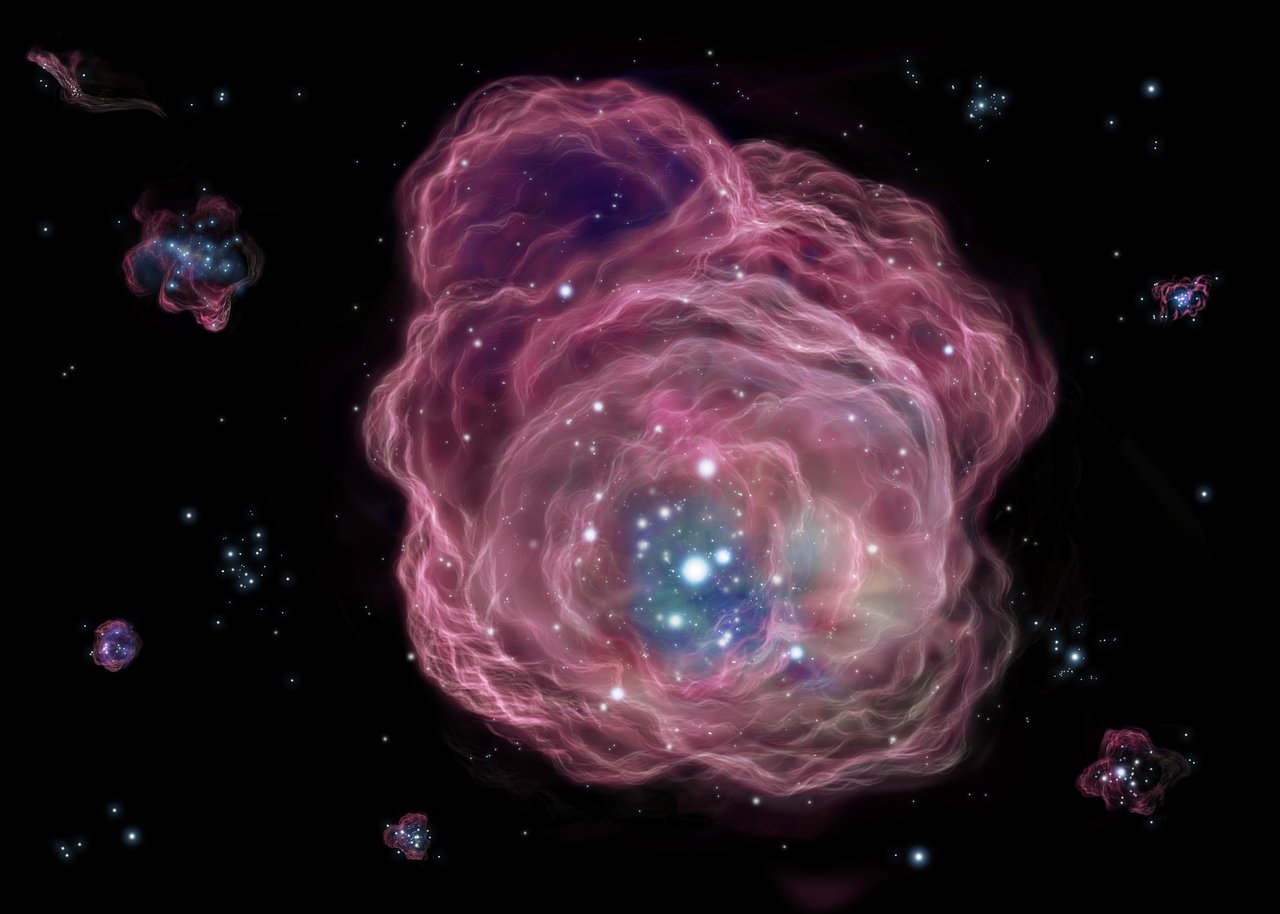
How many galaxies?
One of the biggest astronomy goals that people had, for a long time, was to answer the question, “How many galaxies are there within the observable Universe?” Back in the late 20th century, Carl Sagan told us there were “billions and billions,” estimating that there were around 100 billion galaxies within our observable cosmic volume. This turned out to be true to an extent: if we restricted ourselves to large, bright, massive galaxies, like those comparable to our own Milky Way.
In recent decades, however, we’ve taken multiple steps forward to better refine our answer. Improvements in the sensitivity of our instruments, as well as increases in wavelength coverage for various sky surveys, have revealed large numbers of galaxies that were previously unknown: galaxies that were smaller, fainter, and lower-in-surface-brightness than were known prior. It caused us to dramatically revise the number of galaxies expected in the Universe: from the hundreds of billions up into the trillions.
We now believe that there are anywhere from 30 to 100 small, faint, low-surface-brightness galaxies for every Milky Way-like galaxy out there, placing the number of estimated galaxies between 6 and 20 trillion at present, a number that would have boggled even Carl Sagan’s mind.
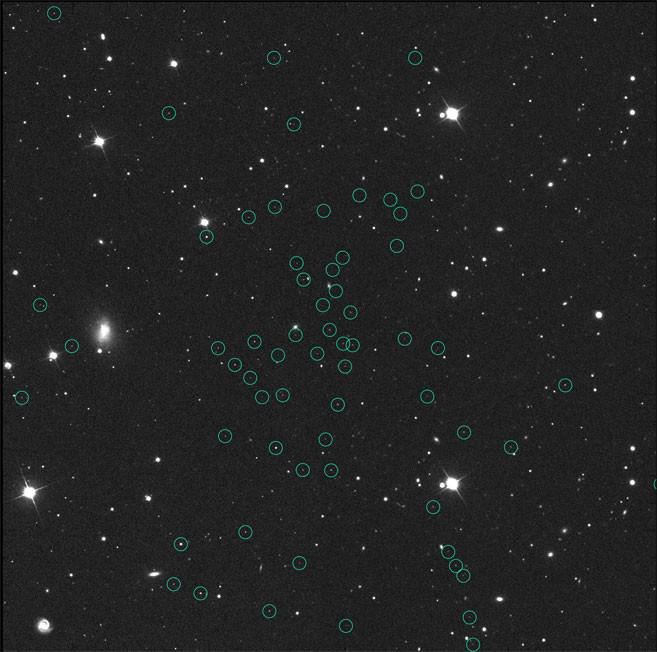
The faint population
But what are these galaxies – the ones that don’t look like ours – actually like? They come in a few different varieties.
There are low-surface brightness galaxies, generally small and low in mass, that have a very small number of stars for their overall mass. They are thought, in general, to be remnants of what happens after a burst of star-formation occurs within a dark matter halo: some gas gets expelled, leaving a small number of stars behind inside a relatively large-mass, gravitationally bound system.
There are ultra-diffuse galaxies, which can come in small-to-intermediate sizes and masses, that have a small number of stars for the volume of space these galaxies occupy. They are thought, in general, to be the result of gravitational interactions, where either multiple galaxies have merged together or where an external gravitational influence has altered the structure of the previously undisturbed galaxy.
But in theory, there should be a third population as well: isolated dark galaxies, with relatively large masses, but absolutely no stars inside as well.
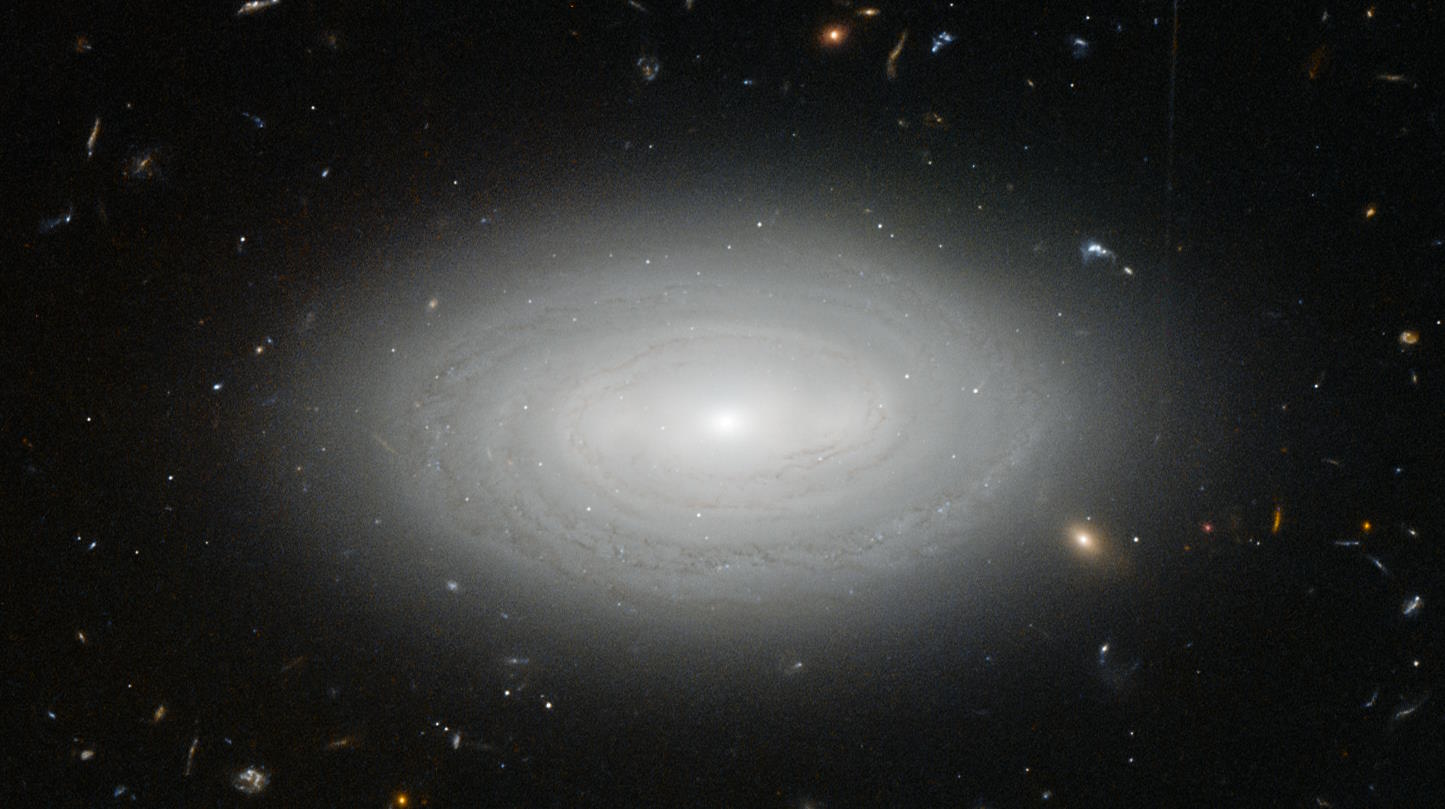
If you have too little mass within a clump of matter, it won’t be enough to gravitationally collapse, and so it’s reasonable to think it may be possible for isolated clumps of matter to persist all throughout cosmic time. If that clump gets too massive, however, and it can cool and radiate its internal/heat energy away, then it will gravitationally collapse and trigger the formation of stars. This tells us that there may be clumps of matter up to a certain mass that have never formed stars, but that beyond a certain mass threshold, you can expect that stars will inevitably exist within any clump of matter so massive.
That’s the expectation.
But do pristine clumps of matter exist at present? Can a galaxy-size mass of gas remain gravitationally/thermally stable over all the billions of years of cosmic history that have ensued? Or will they inevitably form at least some stars, creating an upper limit to their gas-to-stars ratio or a lower limit to the density of gas they possess? And what conditions or mechanisms determine whether we have a clump of gas with no stars – i.e., a primordial, dark galaxy – or just a faint, low-surface-brightness galaxy to reckon with?
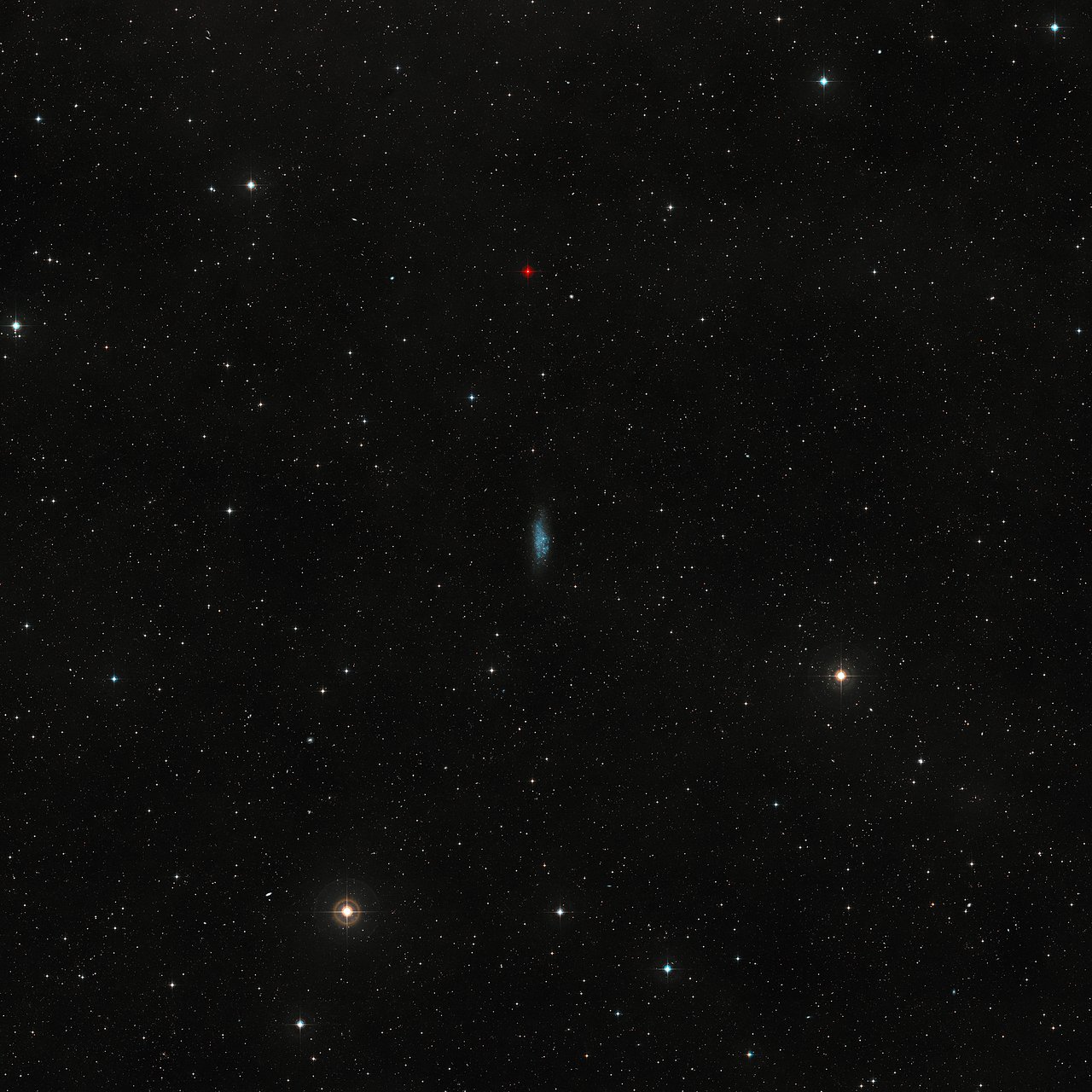
The search
The reason galaxies are called “low surface brightness” is because even at their centers, which are normally the brightest part of a galaxy, their brightness is at least one astronomical magnitude (about a factor of 2.5) fainter than the overall brightness intrinsic to the night sky itself. You can still measure the stars within them, but often it pays to look for other types of signals that might show up: signals like those imprinted by moving neutral hydrogen gas, which is observable in radio light. Since the 1970s with the advent of the (now defunct) Arecibo observatory, this has been leveraged to great success.
If you want to find a primordial, dark galaxy, it makes sense to start by using some of the same methods that you use to find low-surface-brightness and ultra-diffuse galaxies: look for faint, telltale signals that don’t necessarily rely on visible light. With Arecibo, the most successful survey as far as finding hydrogen-rich ultra-diffuse dwarf galaxies has been the ALFALFA survey, which found an estimated 30,000 extragalactic sources. Unfortunately, exactly zero of those sources were the vaunted primordial, dark galaxies that astronomers were seeking. They all had at least some level of stars inside of them, providing a clue that perhaps the answer is, “These objects don’t actually exist at present.”

A happy accident
In 2021 and 2023, two “almost dark” galaxies were found: AGC 229101 (within the ALFALFA survey), and Nube, found within the IAC Stripe82 Legacy Project. They were the closest things we had found to a true “dark galaxy,” but both still have stars inside. Now, in 2024, the situation has changed, with the accidental but profound discovery of an object known as J0613+52: perhaps the first true dark galaxy ever spotted.
The accident was laughable in retrospect: as part of a survey of neutral hydrogen gas of known low-surface brightness galaxies, three different telescopes – the National Science Foundation’s Green Bank Telescope, the Arecibo Telescope, and the Nançay Radio Telescope in France – were used to point at and measure the hydrogen within about 350 independent galaxies. When analyzing the collected data, a discrepancy emerged: one of the galaxies showed wildly inconsistent data between the data collected from Green Bank and the data collected from Nançay.
Upon closer inspection, it turned out that there was an error in the source catalog used for pointing, and the Green Bank Telescope was, perhaps unceremoniously, pointed at entirely the wrong region of sky: a region only notable for its unremarkable nature, with no known nebulae or extragalactic sources within it.
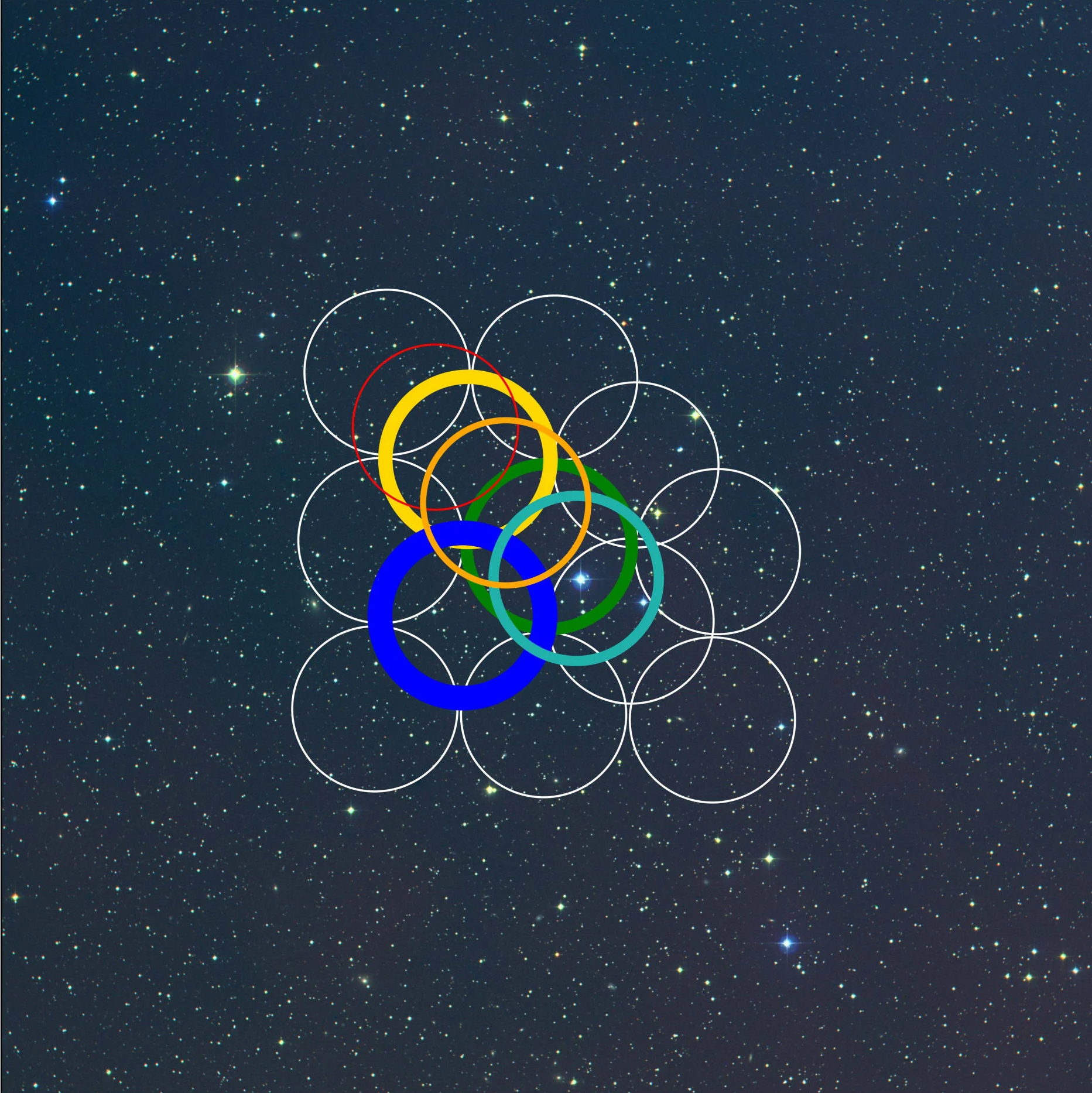
And yet, there was a signal coming from part of that region! The circles in white, above, indicate regions where no “signal” was found, indicating the (expected) absence of neutral hydrogen. But in the colored regions, there was neutral hydrogen found, with the line thickness indicating the strength of the observed signal. Where colors are seen, the “redder” colors indicate where this hydrogen appears to be moving away from us, while the “bluer” regions indicate where this hydrogen appears to be moving relatively toward us: perhaps a likely indication that this clump of matter is rotating.
When we turn these into quantitative numbers, it turns out the inferred rotational speeds are actually quite large, and even comparable to speeds found within the Milky Way: at around 200 km/s. The clump of gas must be quite distant – estimated at around 270 million light-years away – and also with a large amount of neutral hydrogen within it: between 1 and 2 billion solar masses worth of gas found inside.
As you can see, below, from the “bump” feature found in the colored circles where a neutral hydrogen signal has been detected, there really does appear to be something “real” found in this region of space, as opposed to elsewhere.
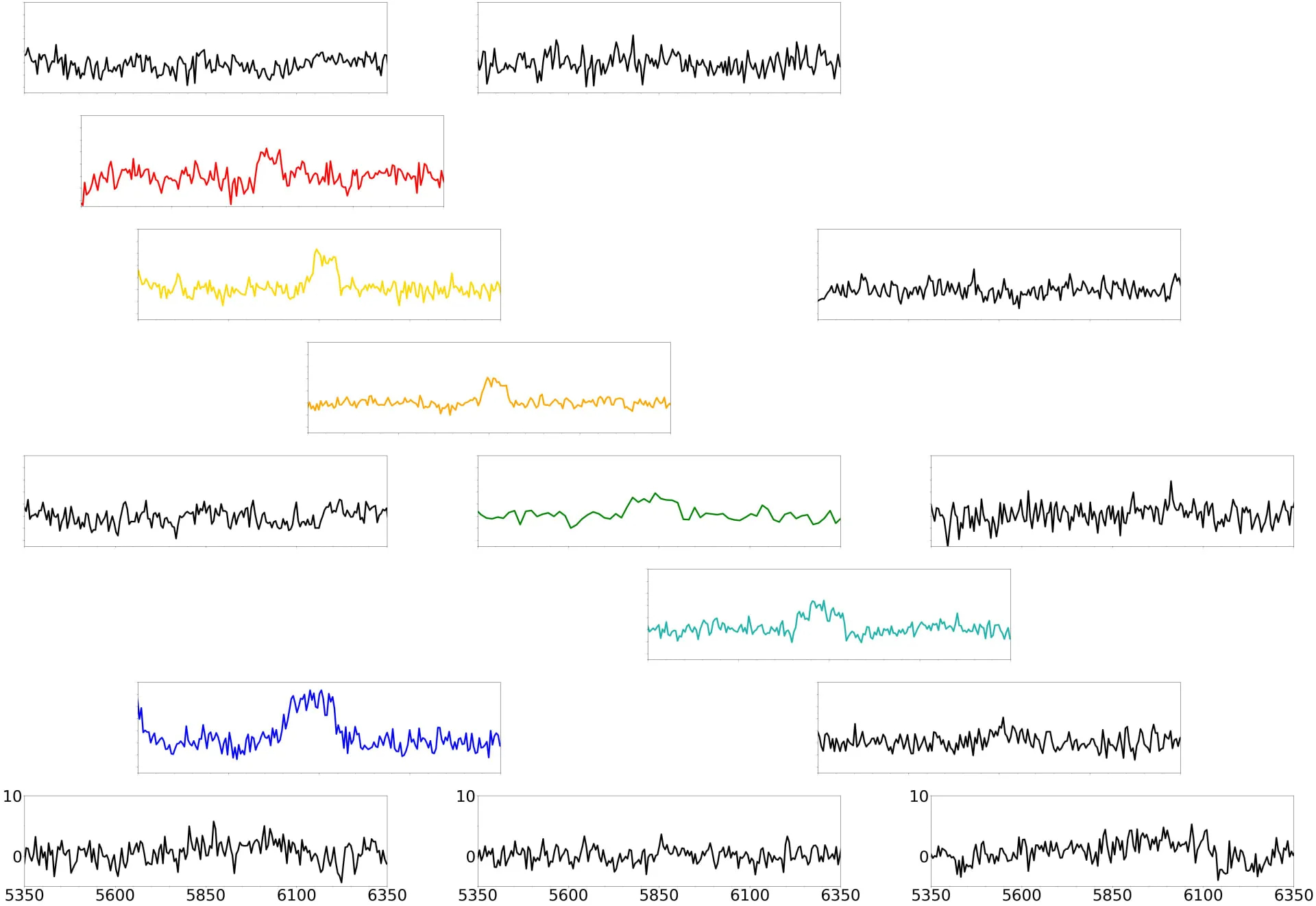
A true dark galaxy?
But unlike both of the “near dark galaxies” found, as well as many of the low-surface-brightness and the vast majority of ultra-diffuse galaxies, not only is there no detectable optical counterpart found in any survey that’s looked at this region of the sky, but there are no “nearby” galaxies to this cloud of gas at all: not for hundreds of millions of light-years!
This is a puzzle. Massive low-surface-brightness galaxies are thought to be formed through the interaction or infall of two smaller galaxies. Ultra-diffuse-galaxies, particularly the ones rich in hydrogen gas, can be created through mergers, infall into a larger group or galaxy, or the gravitational effect of tidal stripping. All of these mechanisms involve an interaction with a nearby, massive neighbor.
And yet, this dark cloud of massive amounts of hydrogen gas, J0613+52, appears to be incredibly isolated. This object, if it has any stars, must be incredibly faint, and even for the largest telescopes, it may take tens or even hundreds of hours of observing time to reveal if there are:
- faint, unseen companions nearby,
- small populations of stars within it that just have not been revealed yet,
- or the presence of other elements and compounds, such as carbon monoxide molecular gas.
However, this gas is not only definitively there, there’s an awful lot of it!
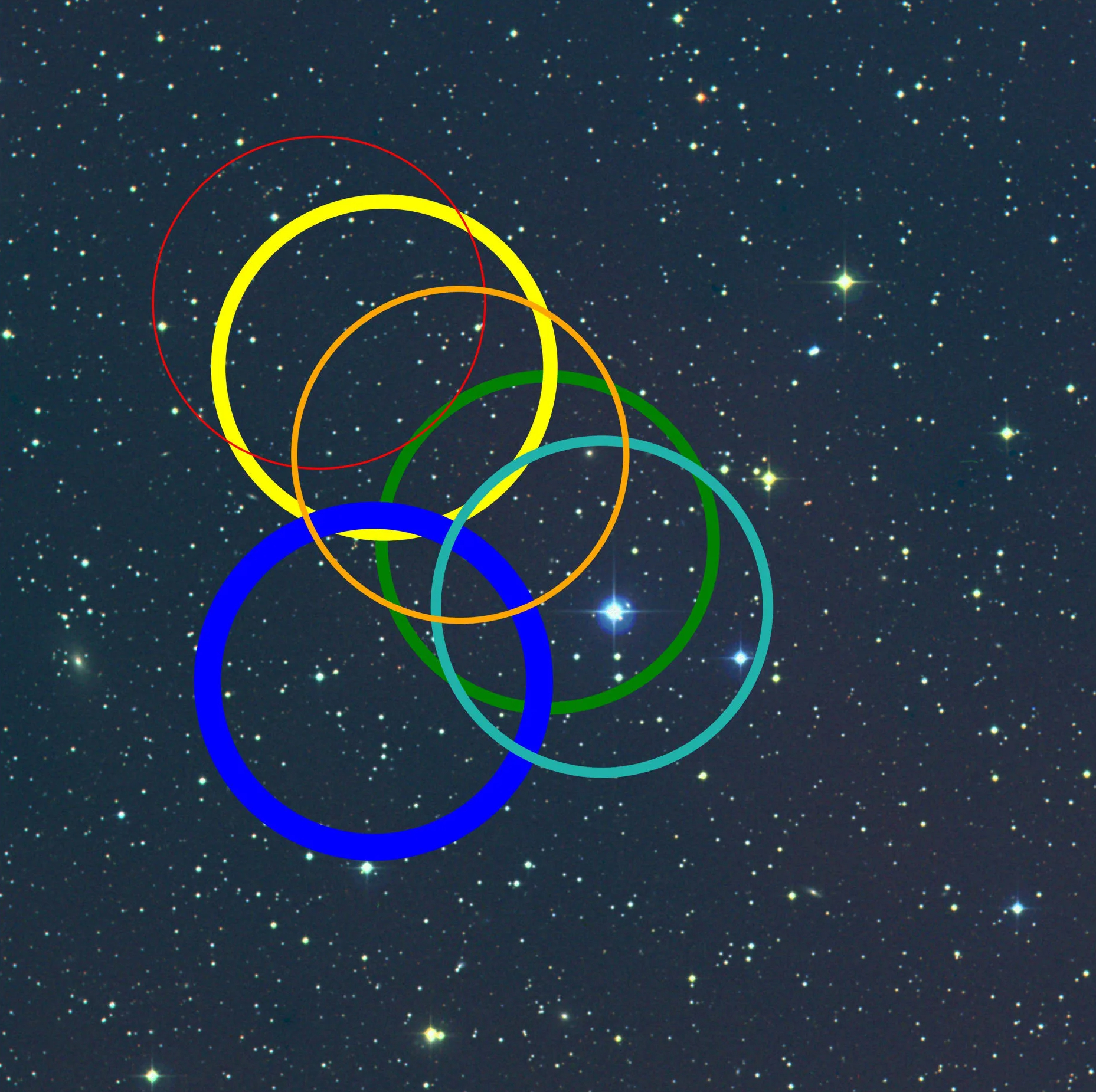
Isolated and diffuse, but pristine?
This is a huge open question: can such a large mass of gas remain in a diffuse, uncollapsed state for so long? Perhaps, even for all 13.8 billion years that our Universe has experienced, going all the way back to the start of the hot Big Bang? In most cases, clouds will accumulate enough matter to collapse, and when they do, they’ll trigger the first burst of star formation in that region of space, polluting the interstellar medium from the detritus of the first stars to die, creating a bevy of enriched elements that leave a telltale spectroscopic signature behind, rich in oxygen, carbon, and other heavy elements.
If J0613+52 truly is a pristine galaxy, then when we take deep enough observations to reveal whatever background galaxies and quasars are present along this line-of-sight, we’ll be able to perform what’s known as absorption spectroscopy: looking at the light from background objects that filters through (and gets absorbed by) the intervening gas. This type of deep optical/infrared imaging can reveal the presence or absence of these heavy elements, the presence or absence of carbon monoxide, the presence or absence of any stars inside, and can tell us whether we truly have an undisturbed, very slowly evolving galaxy right here in the local Universe.
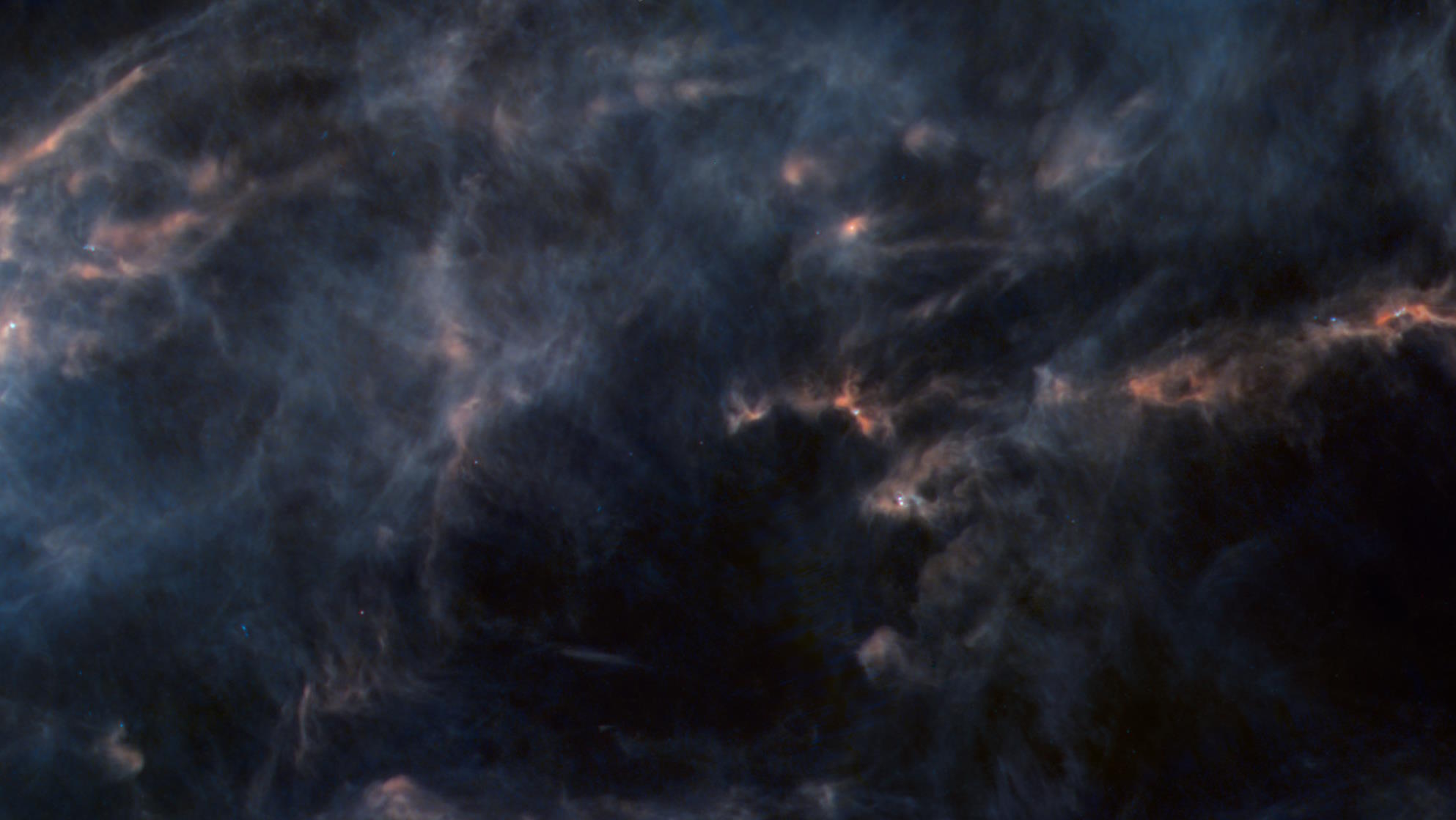
A window into the cosmic unknown
It’s important to note that even if it turns out that there is some faint population of stars inside this object, it truly does represent a window into the cosmic unknown. We have never before found a dark (or even an almost-dark) galaxy that was so isolated from all other cosmic structures at such late times in the Universe, nor one with such large amounts of fast-moving neutral hydrogen gas within it. The three approaches taken to follow up on this object should be:
- to perform deep, multi-wavelength imaging of this region of sky with other instruments,
- to follow up with a larger-aperture, higher-resolution radio telescope to better map out the gas in this object,
- and to perform a high-resolution, systematic survey of the entire sky, searching in earnest to see if there are any other dark galaxies (or dark galaxy candidates) out there.
We know that these types of structures were far more common in the early Universe, and likely describe some of the first structures that formed: beyond even the current reach of JWST. If we want to understand what existed at the earliest times in our Universe’s history, the best thing we can do is to find the closest local analogue systems, and study them in gory detail. With the discovery of J0613+52 now in hand, the next scientific steps will provide a window into our cosmic past that astronomers have never had access to before.
